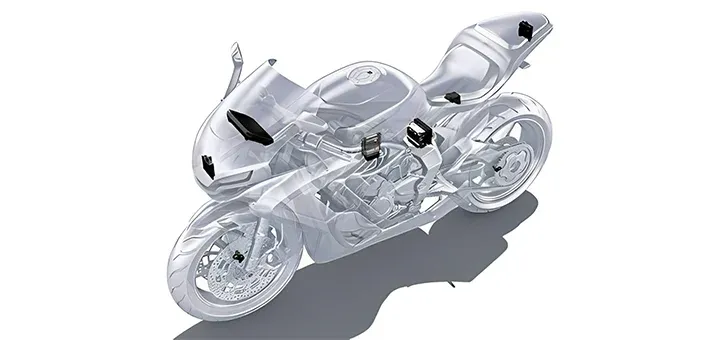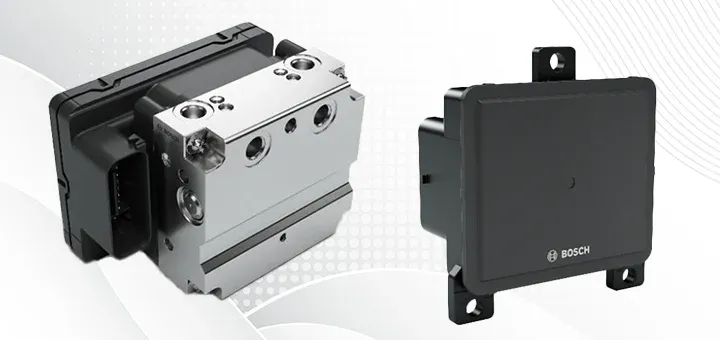KTM to Integrate New Bosch ARAS Functions in Upcoming Model

KTM is finally collaborating with Bosch to integrate four of their state-of-the-art, radar-based Advanced Rider Assistance Systems (ARAS) into a new motorcycle model. This exciting new bike is set to hit the market in November 2024. This brings good news for motorbike enthusiasts as high-tech integrations in the motorcycle industry continue to gain traction. These advancements enhance comfort and safety for bikers while still retaining the thrill of riding.
Introduction to the New Technologies

Bosch has announced six radar-based assistance systems-five of which are world premieres. According to Bosch Accident Research, the innovation can prevent up to one in every six accidents on German roads - a number nearly one out of seven from last year's record. The company has already shaken up the motorcycle market in 2020 with its support functions. This will now begin demonstrating four new forms of assistance in a new KTM model later this year, 2024, and mass production is expected to start in 2025.
Bosch wants motorcycling to be safer and more comfortable but does not lose that excitement of riding. “We’re very satisfied with the longstanding collaborative relationship between our development teams, and we’re excited that KTM is the first to put these new functions to use”, says Geoff Liersch, head of Two-Wheeler & Powersports at Bosch. These new features represent another step forward in that mission, and we are excited to join forces with KTM.
What are these Four ARAS Functions?

The four new functions to be integrated using front radar technology that will complement the riding experience were created with extra support to give a rider while keeping the core enjoyment of motorcycling intact. What these systems offer is examined closely below:
1. Adaptive Cruise Control - Stop and Go (ACC S&G)
Riding through traffic is a challenging task for riders. Bosch came up with the ACC S&G to eliminate this. It is an add-on to the adaptive cruise control system that is already available. With this function, motorbikes are able to stop in traffic jams, and there is no need to press the clutch continuously to regain forward motion. When the bike being followed in line advances again through the mere pressing of a button or just by lightly pressing the throttle. This innovation is the first to provide greater comfort but also increase safety profiles, especially in stop-and-go conditions.
2. Group Ride Assist (GRA)
For riders who enjoy riding in groups, achieving enough safe distances may become challenging. The GRA function applies an algorithm to discern staggered formations within the group of riders. It automatically adjusts the speed to maintain appropriate distances from other motorcycles to have a less stressful ride in a group. In that sense, it behaves much like conventional ACC when it's not in use so that it can be flexible in different scenarios.
3. Riding Distance Assist (RDA)
In a nutshell, RDA allows the rider to keep a proper distance from the front vehicle so the chance of a rear-end collision is minimised. The feature differs in cruise control. This feature allows the rider to adapt its speed by the throttle, as the system can automatically provide brakes or accelerate less if necessary. It allows the rider to override the feature at any time, and the process is so smooth that it does not affect the riding experience.
4. Emergency Brake Assist
Emergency brake assist, or EBA, is a system that is in motion in emergencies when a very swift reaction can make a difference. In such scenarios, if the system figures that an accident might occur, the braking pressure is not sufficient. Moreover, it automatically increases braking pressure to subdue the intervention and finally brings the rider to a quick stop as soon as possible. This may save lives in dire circumstances by possibly avoiding accidents or lessening collision severity as much as possible.
Other Safety Features
In addition to these core features, KTM's new model will also equip two other radar-based functions that assist in rider safety:
Rear Distance Warning (RDW)
Observing the traffic approaching the motorcycle from behind, if another vehicle approaches from a too-close distance, the rider is informed of the potential threat. Such added awareness might avoid rear-end collisions and give riders a head start on decisions to be made before such an accident occurs.
Rear Collision Warning (RCW)
The RCW system advances further by warning the rear vehicles of the possibility of a back-end collision with the motorcycle. When hazard lights are activated, drivers are warned to reduce their impact on riders in high-risk situations such as stop-and-go traffic or waiting at traffic signals.
Future of Motorcycling
The infusion of these high-tech ingredients in the new model of KTM. This undoubtedly ensures that everything is going to be different for motorcycles and their designs and marketing in the future. Bosch tried to enhance safety and comfort without diminishing the excitement of motorcycling. With such developments brought into the experience of the ride, the outcome is likely to change the nature of the experience itself, providing a nearly nostalgic and modern twist that captures the hearts of both new and seasoned riders.
Before you go, have a look at the India grants design patent for the Honda Beat scooter.
Follow us for the Latest Bike Industry Updates
Facebook - https://bit.ly/BikeJunction_offl_fb
Instagram- https://bit.ly/BikeJunction_ofl_insta
Twitter - https://bit.ly/BikeJunction_ofl_twitter
Previous
Next











